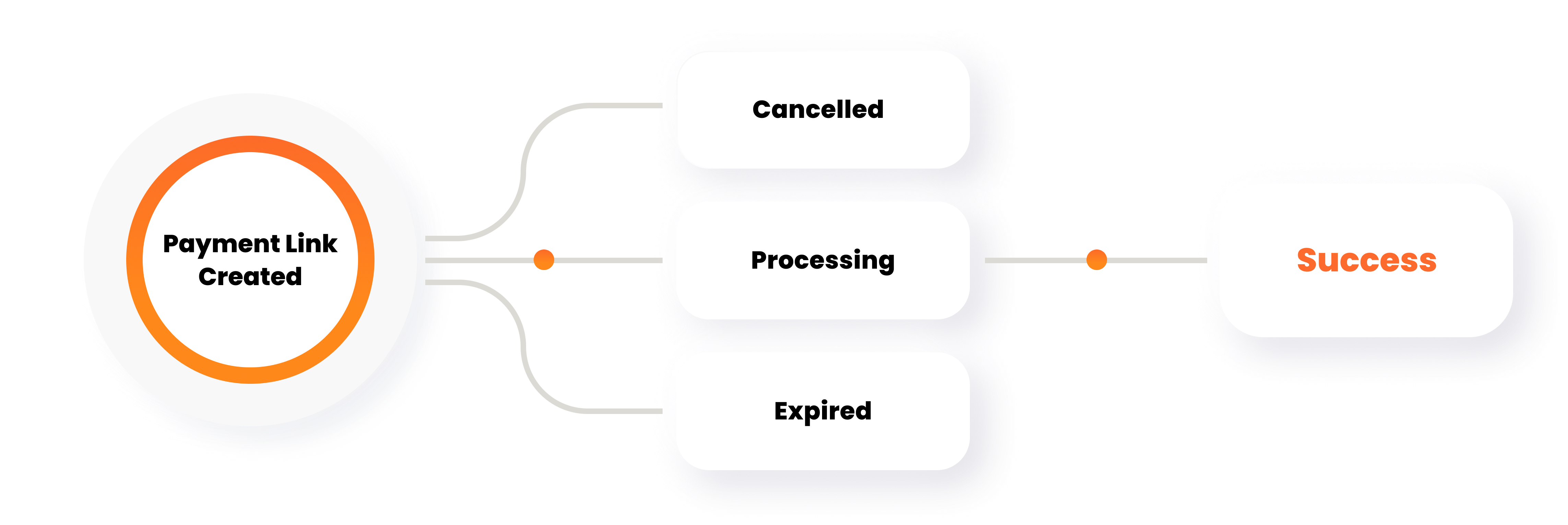Payment Link Lifecycle
Life Cycle Overview
In the payment process, a generated payment link can transition through several states, each representing a different stage in the transaction journey. Below are the possible states and the transitions between them:

1. Created
- Description: This is the initial state when a payment link is generated by the merchant. The link is ready to be shared with the customer, allowing them to initiate the payment.
- Possible Transitions: After the link is created, it can move to any of the following states depending on the customer's interaction and other external conditions.
2. Cancelled
- Description: The payment link may be cancelled by the merchant or the system due to various reasons (e.g., the merchant decides not to proceed, customer request, or policy constraints).
- Transition: Once a link is cancelled, it cannot proceed to any other state and is considered closed. No further action can be taken on this link.
3. Processing
- Description: When a customer accesses the payment link and initiates the payment process, the link transitions to the "Processing" state. This indicates that the payment is underway but has not yet completed.
- Transition: From "Processing," the link can transition to either:
- Expired: If the payment process does not complete within a specified time frame or encounters an error, the link expires.
- Success: If the payment completes successfully, the link transitions to the final state.
4. Expired
- Description: If the payment link is not used within a certain period or if the payment attempt fails due to timeout, it will expire. An expired link cannot be used again, and the customer will need a new link to attempt the payment.
- Transition: The "Expired" state is a terminal state; once expired, the link cannot be reactivated or transitioned to any other state.
5. Success
- Description: This is the final state for a successful payment. The payment has been completed, and the transaction is marked as successful.
- Transition: Once in the "Success" state, no further transitions are possible, as the transaction is finalized.
Summary
Understanding the lifecycle of payment links helps merchants manage payment collections effectively. By monitoring and taking appropriate actions based on the state of each link, merchants can ensure smooth transactions and efficient payment management.
For further details on API usage and other functionalities, please refer to the respective sections in the documentation.
Updated 4 months ago